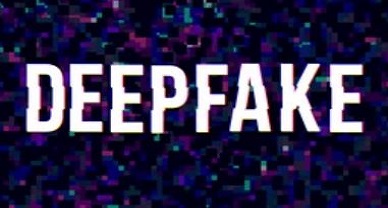The Illusion Factory: Getting Around In the Deepfake World
INTRODUCTION
Illusions rule supreme and reality becomes hazy in the captivating yet dangerous world of synthetic media. The boundaries between reality and fiction are deftly drawn in this technological wonderland, where faces change at the whim of algorithms and voices mimic with unsettling accuracy. Enter the realm of Deepfakes, a stunning display of artificial intelligence skill that has altered entertainment, captured our attention, and ushered in a troubling age of dishonest digital manipulations.
Imagine a landscape created by Deepfakes, the wonder that inspired amazement and wonder at its inception, where voices, videos, and images all seem real but are completely fake. With its smooth digital magic, it revolutionised marketing and media from the moment of its inception. However, the rapid advancement of this technology has transformed it from a harmless invention into a disruptive force that has permeated the world of false information and called into question the fundamentals of authenticity, truth, and trust.
In this maze of artificial intelligence, it is critical to understand, recognise, and counteract these digital tricks. This study explores the inner workings of the illusion factory, revealing the complexities, effects, and difficulties associated with artificial media. Its goal is to shed light on practical methods that communities, individuals, and legislators can use to combat the widespread use of manipulated content. It also seeks to emphasise how urgent it is to raise awareness, improve digital literacy, and put strong protections in place in a world where digital connectivity is becoming more and more integrated. Welcome to the fascinating investigation of Deepfakes, the mysterious sorceress and foreboding sign of the digital era.
DIVING DEEP INTO THE HORRORS OF DEEPFAKE
Like many other nations, India has seen the startling spread of Deepfakes, highlighting the potency and dangers of this artificial media. Deepfakes have been used for nefarious purposes in recent events across the nation, ranging from targeted defamation of individuals to the dissemination of political misinformation. Notably, edited videos that attempted to influence public opinion by showing fake speeches or scenarios involving well-known political figures emerged during the election and campaign seasons. These incidents draw attention to the potential harm that Deepfakes could do to democratic processes and public discourse.
Rashmika Mandanna, an Indian actress, was recently involved in an incident that brought attention to the concerning frequency of deepfakes and the possible harm they can cause. Mandanna expressed grave concerns about a widely shared deepfake video that was first shared on Instagram by Indian-British Zara Patel and purportedly showed Mandanna’s face. The actress expressed how uncomfortable she was, calling the encounter “very frightening,” and how the improper use of deepfake technology was emotionally upsetting.

The incident involving the actress Rashmika Mandanna acts as an unsettling reminder of the consequences that Deepfakes have in the real world. These modified videos are more than just a new development in technology; they have the ability to cause harm to people’s emotions, destroy their reputations, and hasten the dissemination of misleading information. Since Deepfakes are dangerous, as government officials have acknowledged, strict laws are desperately needed to prevent their spread and protect the public from the unfavourable effects of this rapidly advancing technology.
Through deception, data manipulation, and propaganda, deepfake technology has the potential to intensify conflicts and jeopardise international security. This gives rise to grave concerns regarding its possible misuse in acts of terrorism and warfare. Reports of deepfakes being used in terrorism and warfare have alarmed lawmakers and security experts worldwide.
Deep fakes have been used in conflicts to propagate propaganda and false information, inflaming tensions and skewing public opinion. For example, there have been reports of videos from the conflict between Russia and Ukraine being altered to fit certain political narratives. Such deepfake content added to the already unstable and complex situation in the region by attempting to sow discord and sway public opinion.
The use of deepfake technology for malicious ends has also been expressed by terrorist groups. Because these groups operate covertly, specific incidents may not be as widely publicised, but there are worries that terrorist organisations may use deepfakes to propagate radical ideologies, fabricate statements from world leaders, or create false narratives in order to incite unrest or further their own agendas. The utilisation of deepfakes to pose as powerful people or high-ranking officials and make statements that are not true could be concerning as it has the potential to incite violence or increase tensions between countries. Deepfake content’s authenticity and plausibility present a serious risk, particularly during times of conflict or geopolitical unrest.
Furthermore, deepfake technology can be used to carry out complex social engineering attacks in the field of cybersecurity. Cybercriminals may produce convincing deepfake audio or video recordings in an effort to trick people or organisations into disclosing private information, breaking security rules, or obtaining illegal access to vital systems.
In addition to posing immediate risks, the use of deepfakes in terrorism and warfare creates long-term difficulties for international security and stability. A multifaceted strategy is needed to address these issues, combining technological developments in deepfake detection with strong international collaboration to create legal frameworks that discourage malicious use and hold offenders accountable.
Deepfake technology has advanced beyond producing lifelike video effects to replicate well-known voices with startling precision. These voice imitations are a serious threat in a number of areas, but especially in the area of fraud and scams. Voice deepfakes, sometimes referred to as synthetic or AI-generated voices, are produced by sophisticated machine learning algorithms that examine and mimic the nuances, intonations, and speech patterns of a particular voice. Malicious actors can create incredibly lifelike voice imitations that are almost identical to the original by using a large number of audio samples of the subject’s voice.
Within the realm of con games, these speech deepfakes have been utilised to carry out social engineering assaults, commonly known as “vishing” (voice phishing). These fake voices are used by scammers to pose as authoritative figures, such as business executives, government representatives, or even family members, in an effort to trick victims into disclosing private information, sending money, or taking other actions that put their security at risk.
An attacker could, for example, impersonate a CEO or other high-ranking official in order to trick staff members into divulging private company information or sending money to fictitious accounts. Similar to this, con artists may mimic the voice of a friend or relative in need and pretend to be in urgent need of money.
Concerns are raised by these voice deepfakes’ sophistication regarding their ability to trick people, companies, and even security systems that depend on voice authentication. These extremely lifelike impersonations could trick conventional voice recognition software systems used to verify identities.
A diversified strategy is needed to mitigate the risks posed by voice deepfakes. It is crucial to develop strong authentication techniques that go beyond voice recognition alone. Voice-based scams can be less dangerous if extra security measures are put in place, such as multiple-factor authentication and verification processes.
In addition, public education and awareness campaigns are essential in reducing the risks associated with voice deepfakes. By teaching people to be watchful and spot telltale clues of phoney voice impersonations, these types of scams can be made much less successful.
CONCLUSION
The advent and development of deepfake technology has brought about a new era in which reality manipulation is possible, casting doubt on our conceptions of authenticity, truth, and reliability. The deepfake world, as this article explores, is rife with moral conundrums, murky legal issues, and social ramifications that cut across national borders.
It is clear that different nations have very different policies regarding the regulation and handling of deepfakes. Countries struggle to find a balance between the need to safeguard citizens from the possible harms of manipulated content, technological innovation, and freedom of expression. The European Union pushes for strict laws protecting privacy and democratic integrity, while the United States debates regulations aimed at criminalising the use of malicious deepfakes. Some Asian nations, meanwhile, investigate practical strategies that maximise the benefits of technology while attempting to lessen its drawbacks. Nevertheless, despite these divergent opinions and legislative initiatives, the difficulties continue. Deepfakes still present a serious threat, particularly in the areas of fraud, terrorism, and warfare. The escalation of voice-based scams, the possibility of terrorist groups disseminating false information, and cases of manipulated content in geopolitical conflicts highlight the critical need for comprehensive strategies to counter these threats.
Going forward, a multifaceted strategy is needed to counter the threats posed by deepfakes. Important elements include improved public awareness, strong authentication techniques, and technological advancements in detection. Governments, tech firms, law enforcement agencies, and international organisations must work together to create uniform frameworks and legal regulations that discourage malicious use and promote responsible innovation.
Essentially, surviving in the deepfake world requires not only technological fixes but also a community effort to maintain moral principles, defend social norms, and maintain information integrity in a world where manipulation of data is becoming more and more prevalent.
Author:- Rani Tiwari, in case of any queries please contact/write back to us at support@ipandlegalfilings.com or IP & Legal Filing.
- REFERENCES
- Chesney, R., & Citron, D. K. (2018). Deep Fakes: A Looming Challenge for Privacy, Democracy, and National Security. California Law Review, 107(3), 1753-1794.
- EU Commission. (2020). A European Approach to Artificial Intelligence: Excellence and Trust. Retrieved from https://ec.europa.eu/info/publications/white-paper-artificial-intelligence-european-approach-excellence-and-trust_en
- Farid, H. (2020). Deepfake Detection: Current Challenges and Next Steps. IEEE Signal Processing Magazine, 37(1), 120-124.
- National Security Commission on Artificial Intelligence. (2021). Final Report. Retrieved from https://www.nscai.gov/wp-content/uploads/2021/03/Full-Report-Digital-1.pdf
- Schwartz, J., & Toppo, G. (2020). Deepfakes and Synthetic Media in the Financial Services Industry. World Economic Forum. Retrieved from https://www.weforum.org/reports/deepfakes-and-synthetic-media-in-the-financial-services-industry

